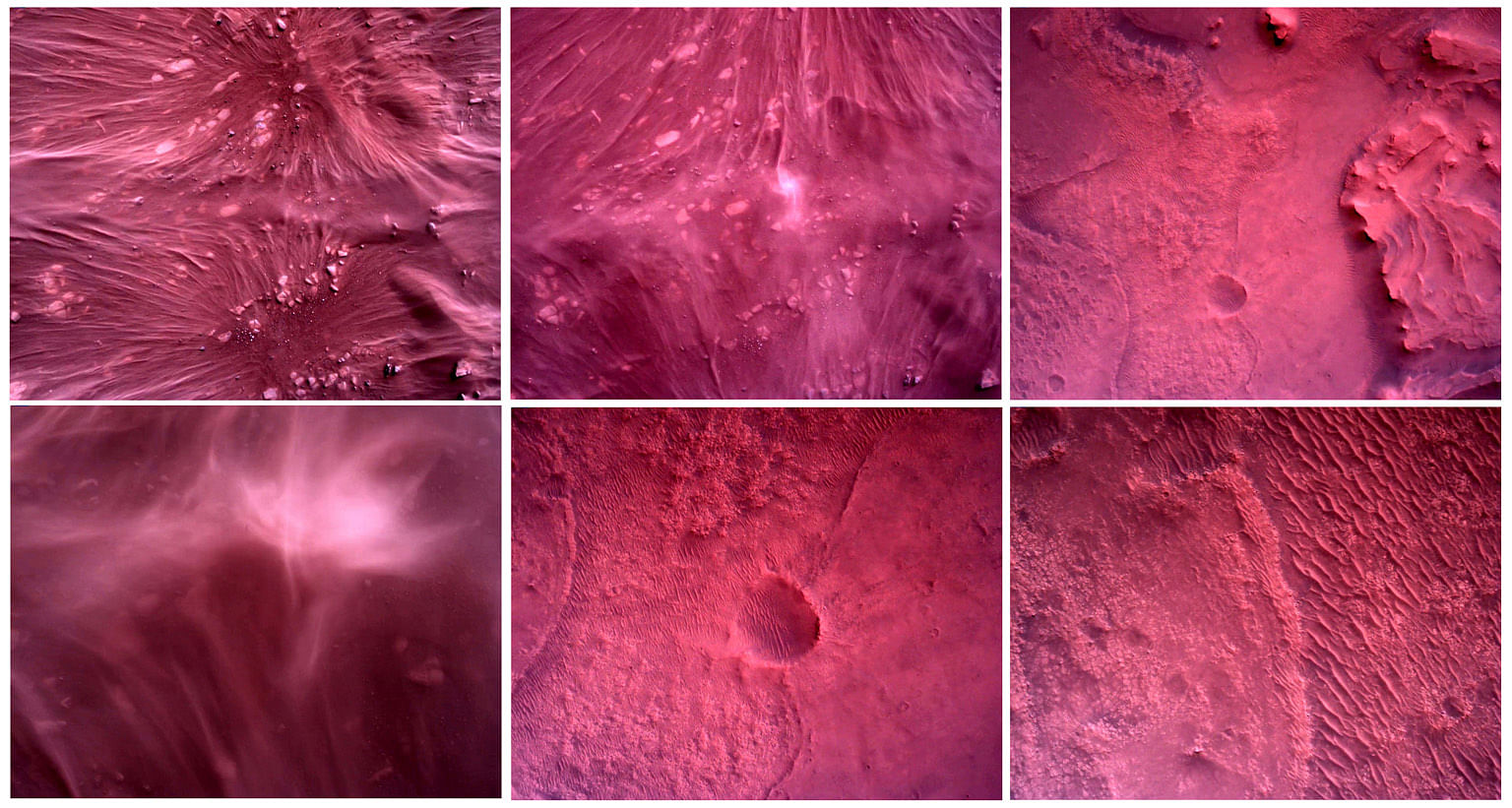WASHINGTON • The United States' space agency has released the first audio from Mars, a faint wind sound captured by the Perseverance rover.
The National Aeronautics and Space Administration (Nasa) on Monday also released the first video of the landing of the rover on the Red Planet.
A microphone did not work during the descent but the rover was able to capture audio once it landed on Mars.
Nasa engineers played a short audio clip of what they said was a wind gust on the surface.
The video clip, lasting three minutes and 25 seconds, showed the deployment of the parachute and the rover's touchdown on the surface of Mars in a cloud of dust.
"These are really amazing videos," said Dr Michael Watkins, director of Nasa's Jet Propulsion Laboratory (JPL). "This is the first time we've ever been able to capture an event like the landing on Mars."
Perseverance's surface mission manager Jessica Samuels said the rover was operating as expected so far. "I am happy to report that Perseverance is healthy," she said.
The footage was recorded last Thursday by a series of cameras mounted at different angles of the multi-stage spacecraft as it carried Perseverance through the thin Martian atmosphere to a gentle touchdown inside a vast basin called Jezero Crater.
Dr Thomas Zurbuchen, Nasa associate administrator for science, described seeing the footage as "the closest you can get to landing on Mars without putting on a pressure suit".
The video montage was played for reporters tuning in to a news briefing webcast from Nasa's JPL near Los Angeles four days after the historic landing of the most advanced astrobiology probe ever sent to another world.

JPL imaging scientist Justin Maki said Nasa's stationary landing craft InSight, which arrived on Mars in 2018 to study its deep interior, previously measured seismic signals on the planet that were "acoustically driven" and then "rendered as audio".
But the mission's deputy project manager Matt Wallace said he believed the Martian breeze represented the first ambient sound directly recorded on the surface of Mars and played back for humans.
Mr Wallace said he hoped to record other sounds, such as the rover's wheels crunching over the surface and its robotic arm drilling for samples of Martian rock.
But it was film footage from the spacecraft's perilous, self-guided ride through Martian skies to touchdown - an interval Nasa has dubbed "the seven minutes of terror" - that JPL's team found particularly striking.
"These videos and these images are the stuff of our dreams," Mr Al Chen, head of the descent and landing team, told reporters.
Dr Watkins said engineers spent much of the weekend "binge-watching" the footage.
The video, filmed in colour at 75 frames a second, shows action in fluid, vivid motion from several angles, the first such imagery ever recorded of a spacecraft landing on another planet, Mr Wallace said.
One of the most dramatic moments is of the red-and-white parachute being shot from a cannon-like launch device into the sky above the rover as the spacecraft is hurtling towards the ground at nearly twice the speed of sound.
The chute springs upward, unfurls and fully inflates in less than two seconds, with no evidence of tangling within its 3.2km of tether lines, Mr Chen said.
A downward-pointing camera shows the heat shield falling away and a sweeping vista of the butterscotch-coloured Martian terrain, appearing to shift back and forth as the spacecraft sways under the parachute.
Seconds later, an upward-pointed camera captures the rocket-powered "sky-crane" vehicle, newly jettisoned from the parachute and its thrusters firing but the propellant plumes invisible to the human eye, as it lowered the rover to a safe landing spot on a harness of tethers.
The only previous moving footage produced of a spacecraft during a Mars landing was a comparatively crude video shot from beneath the previous rover, Curiosity, during its descent to the planet's surface in 2012.
That stop-motion-like sequence was shot at 3.5 frames per second from a single angle that showed the ground gradually getting closer but included no images of the parachute or sky-crane manoeuvres.
AGENCE FRANCE-PRESSE, REUTERS
